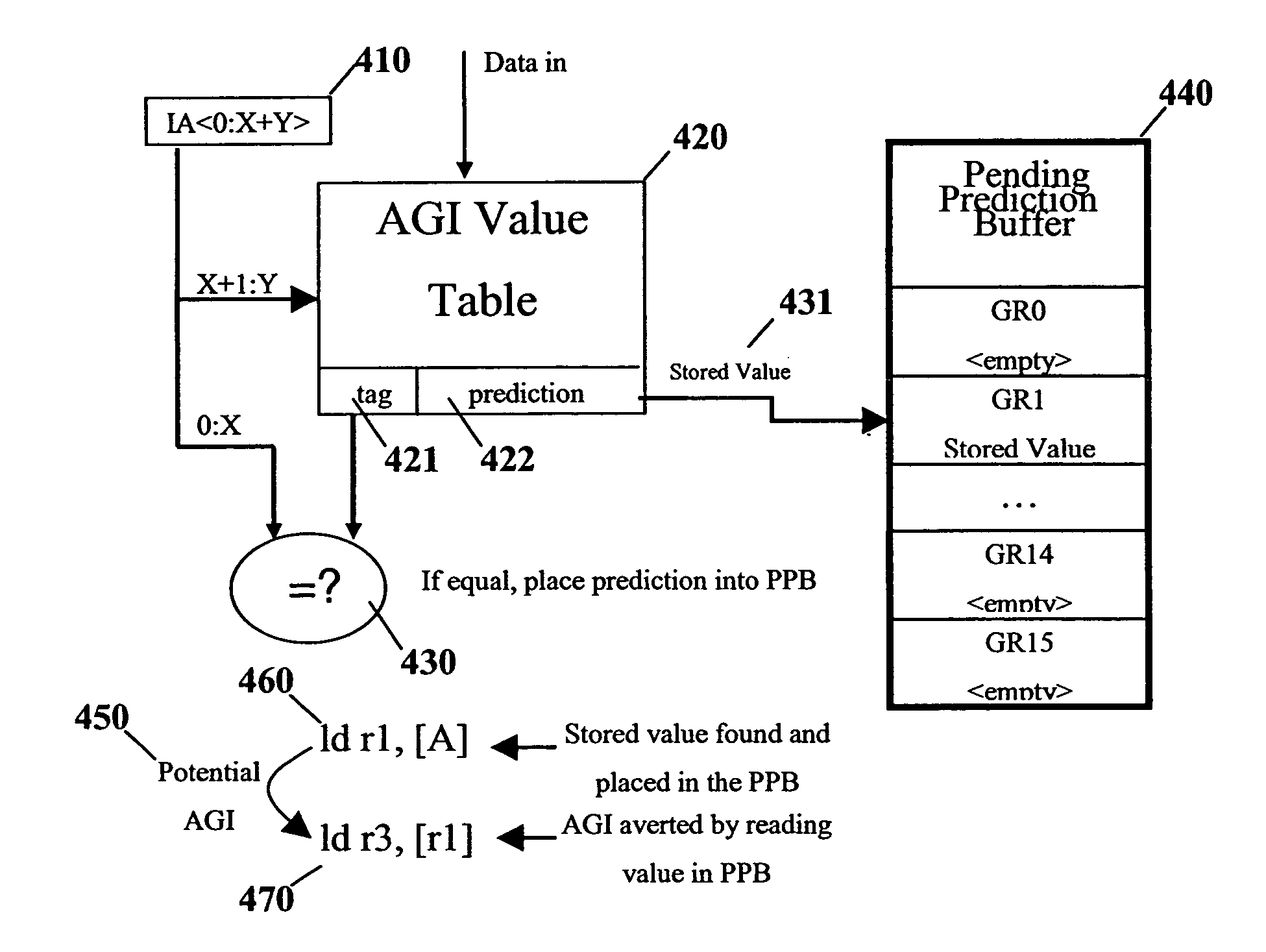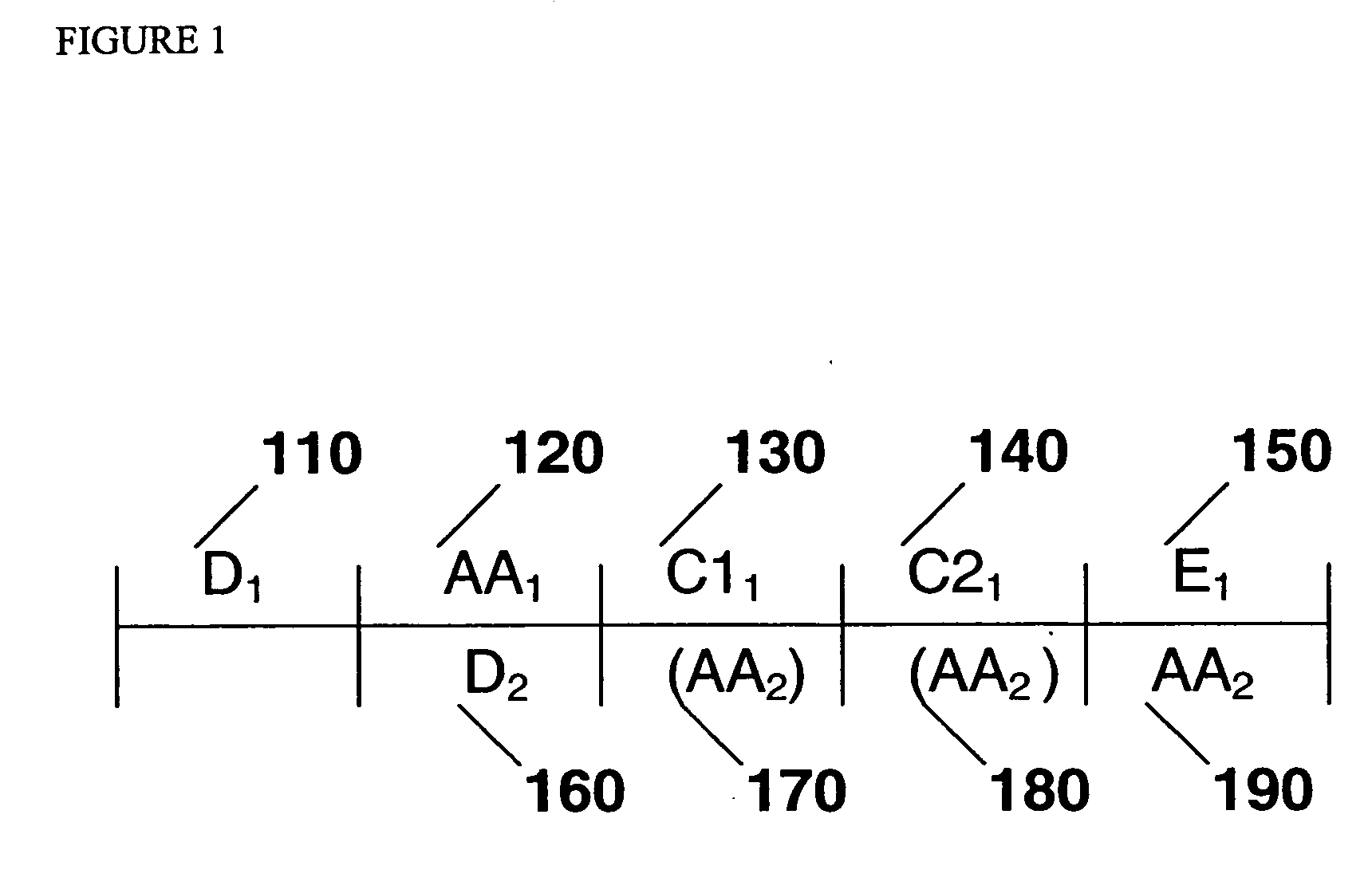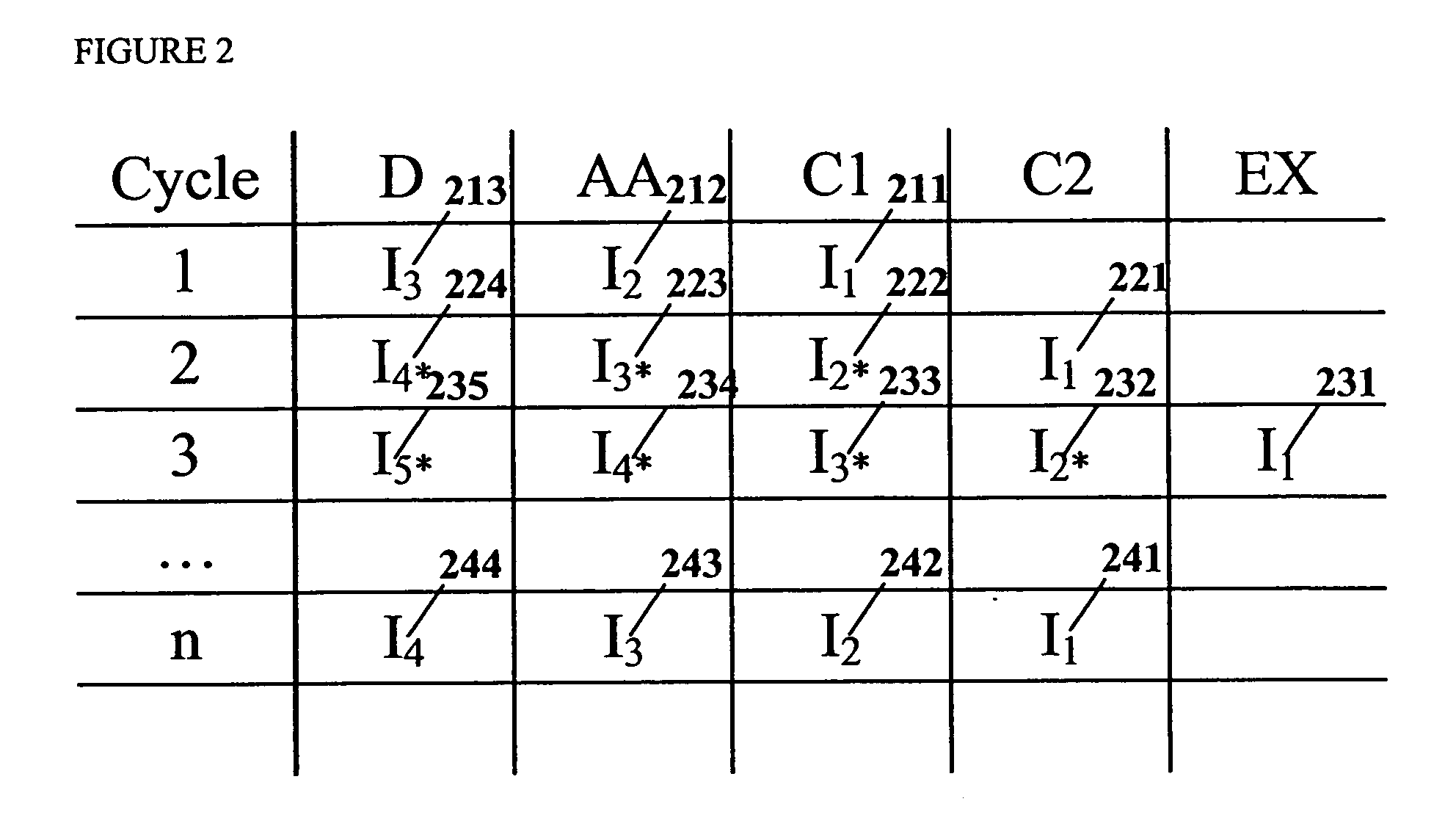Address generation interlock resolution under runahead execution
a technology of address generation and runahead execution, applied in the field of computer processing systems, can solve the problem of not completely eliminating the effect of agi occurrence, and achieve the effect of reducing minimizing the effect of agi
- Summary
- Abstract
- Description
- Claims
- Application Information
AI Technical Summary
Benefits of technology
Problems solved by technology
Method used
Image
Examples
Embodiment Construction
[0021] The mechanism described herein stores address generation data inputs with respect to a data cache output as calculated during runahead execution in a history table and then uses that stored data to avoid an effect known as address generation interlock 450.
[0022] Prior to this invention, the primary benefit of runahead execution was the ability to make very accurate memory prefetches, hiding much of the latency associated with cache misses. Whenever a cache miss occurs for a given instruction 221 the processor does not need to stall, but instead can move forward to search for other cache missing data fetches. The invention described herein takes advantage of the runahead execution stream 222, 223, 224, by searching for occurrences of address generation interlock as well as additional cache misses and remembering any values that can be used to avoid address generation interlock (AGI) under normal execution. Normal execution is defined as when the pipeline is progressing forwar...
PUM
 Login to View More
Login to View More Abstract
Description
Claims
Application Information
 Login to View More
Login to View More - R&D
- Intellectual Property
- Life Sciences
- Materials
- Tech Scout
- Unparalleled Data Quality
- Higher Quality Content
- 60% Fewer Hallucinations
Browse by: Latest US Patents, China's latest patents, Technical Efficacy Thesaurus, Application Domain, Technology Topic, Popular Technical Reports.
© 2025 PatSnap. All rights reserved.Legal|Privacy policy|Modern Slavery Act Transparency Statement|Sitemap|About US| Contact US: help@patsnap.com



